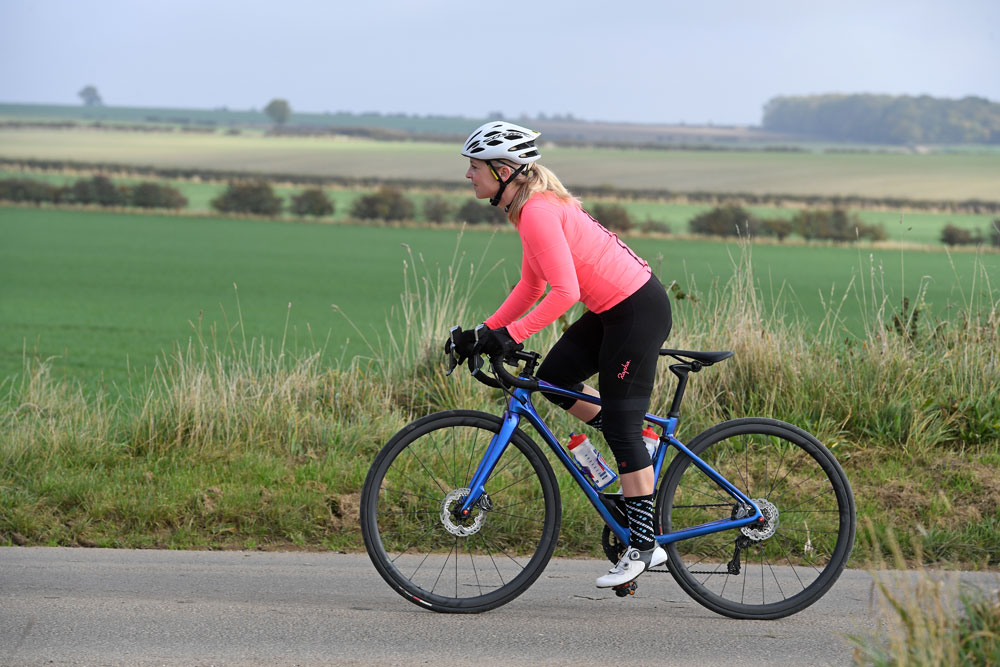
In our 'Will It Work?' series, Sports Science expert Hannah Reynolds investigates common fitness hacks, to determine if they're really any good for the time crunched athlete.
Bonk training, also known as fasted training, is a well-worn concept that cyclists have been employing for decades. Most riders are familiar with the lightheaded feelings of ‘bonking’ or blowing up and generally bonking is something to avoid as the consequences are an absolute loss of performance. Bonking occurs when your body has run out of its preferred fuel source, glucose, and becomes reliant on the much slower energy released from fat.
Bonking is a horrible sensation; your legs feel unresponsive and your whole body is weak. Along with sluggish legs your thinking and response time slows, your stomach feels queasy and you may even have heart palpitations. Once you have bonked it is game over for any race or training session. So why are people wilfully doing this as part of their training?
During fasted training the glycogen stores in your liver and muscles are already depleted, compelling the body to rely more on fat reserves for energy from the start of your ride. The rationale for these sessions is that they enhance the body's ability to metabolise fat as a fuel source, improve endurance, and elevate overall metabolic efficiency.
Fasted rides are most easily done early in the morning before breakfast or after a prolonged period without food. Fasted rides fit well into the lifestyle of cyclists who commute to work by bike or use the early morning to fit their training session into an otherwise busy day.
Does bonk training work?

Given that bonking is such an unpleasant experience before introducing this style of training into your programme you need to be sure that it works and will serve your training goals. We spoke to Dr. David Lipman, health and human performance specialist about whether fasted training is worth it.
“Fat oxidation or the ability to burn fat as fuel is really important. If you are burning more fat you can spare your carbohydrate stores and carbs, or at least glycogen, is a rate limiter on exercise intensity. Elite athletes have high fat oxidation [they can burn fat at higher intensities of exercise] so you have a theoretical basis for why people train this way.”
Research interest in fasted training started around the late 1990’s but endurance athletes had been doing it for years prior with anecdotal evidence that endurance improved. “Low glycogen may stimulate adaptions and there are certainly elite athletes training this way, but we don’t give away medals for fat oxidation, we give it away for speed, for winning.” This is one of the concerns of the detractors of fasted training – that you are deliberately putting a cap on the intensity of the training session. “There are certain examples of athletes who do a really good job of training on low carbohydrate and racing with high carbohydrate.” Dr Lipman gives the example of Kilian Jornet, one of the greatest trail runners of all time, “but whether his ability to use fat at high intensity is due to fasted training or his high volume of training over many years is unclear.”
When considering fasted training it is important to look at the whole picture, “There are other risks that you are balancing. Fasted training may compromise immune function and result in relative energy deficiency which can be a problem for bone health. There are short term consequences such as cognitive function, feeling mentally fuzzy so you can’t react quickly. It’s also worthwhile thinking about your performance at work after you finish, if you are terribly hungry you are compromising your ability to do your job well. If you train fasted then eat rubbish the rest of the day it’s not contributing to your overall progress or quality of nutrition. When riding fasted, you are not going to ride as well, you won’t be able to ride at higher intensities so your session will be of a lower quality.”
“Fasted training doesn’t sit high in my hierarchy of things to recommend,” Dr Lipman explains, “if you are time crunched better sleep, stress management and increased daily movement are more important.” Ultimately fasted training is not the shortcut to endurance that time crunched athletes are hoping for, “the people with the highest fat oxidation rates are often the people who have done the most training; the highest volume and for the most years of their life.” If your goal for fasted training was to lose weight then think again, “fasted training doesn’t make a real difference to body weight compared with doing more training in total. Without carbs you will oxidise more fat but not ride as far, with carbs you can ride further and burn more calories in total,” said Dr Lipman, who produces a regular newsletter on health performance insights.
Pros of bonk training
Improved Fat Metabolism: Training in a fasted state encourages the body to utilize fat as a primary energy source, potentially increasing the efficiency of fat metabolism and preserving glycogen stores for more intensive efforts.
Enhanced Endurance: Over time, fasted training may improve endurance by making the body more resilient to energy deficits and enhance its ability to maintain performance when glycogen levels are low.
Insulin Sensitivity: Fasted training may improve insulin sensitivity and glucose metabolism, which is beneficial for overall health and performance.
Mental Toughness: Training in a fasted state can build mental toughness and resilience, as you become accustomed to pushing through discomfort and perceived energy deficits.
Bodily Awareness: Riding fasted can help you to recognise the feeling of blowing up or bonking enabling you to anticipate and avoid energy deficit in a performance or race scenario.
Cons of bonk training
Reduced Performance: Training without adequate fuel can lead to a decrease in the quality of your training, especially during high-intensity workouts leading to suboptimal sessions and diminished gains in strength and speed.
Reduced cognitive ability: Fasted training leads to low blood glucose causing symptoms like dizziness, fatigue, poor concentration and slower reaction times.
Increased Muscle Breakdown: Lack of carbohydrates can lead to muscle protein breakdown for energy, which is counterproductive for muscle maintenance and growth.
Compromised Immune Function: Prolonged or frequent fasted training sessions might weaken the immune system, making athletes more susceptible to illness and infections.
Nutrient Deficiencies: Reducing the amount you eat during the day might mean you are not taking in the full spectrum of quality nutrition you need. Finishing a session feeling very hungry can also lead to poor dietary choice later in the day, and prolonged periods of fasting can contribute to relative energy deficiency in sport (RedS).
Put to the test

While one ride isn’t enough to tell if bonk training can appreciably change your fat metabolism it is certainly plenty to know that they are not a pleasant experience. Without any carbs to draw on I felt flat and slow. After about an hour of riding I started to get the tell-tale tingle in my finger tips and slight tunnel vision which for me always precedes blowing up. By the time I reached home I felt queasy and there was a distinct wobble as I dismounted. After only 90-minutes I felt like I’d done a six-hour ride in the mountains on a hot day with nothing but a jam sandwich. After munching my way through the content of the kitchen cupboards I needed a good long lie down to recover, making this far from practical on a work day.
The bottom line
Bonk training results in lower intensity, slower riding. If you only have a limited amount of time to train in a week you are better off committing to properly fuelled quality sessions that will progress your fitness. Fasted training isn’t a weight loss tool, you can create more of a calorific deficit by riding harder or further than the slow plod of a fasted ride allows. If you want to improve your endurance capabilities training your body and specifically your gut to handle larger amounts of carbohydrate, with a carbohydrate strategy that suits you, may be more beneficial.





!["[T]he First and Fifth Amendments Require ICE to Provide Information About the Whereabouts of a Detained Person"](https://images.inkl.com/s3/publisher/cover/212/reason-cover.png?w=600)

